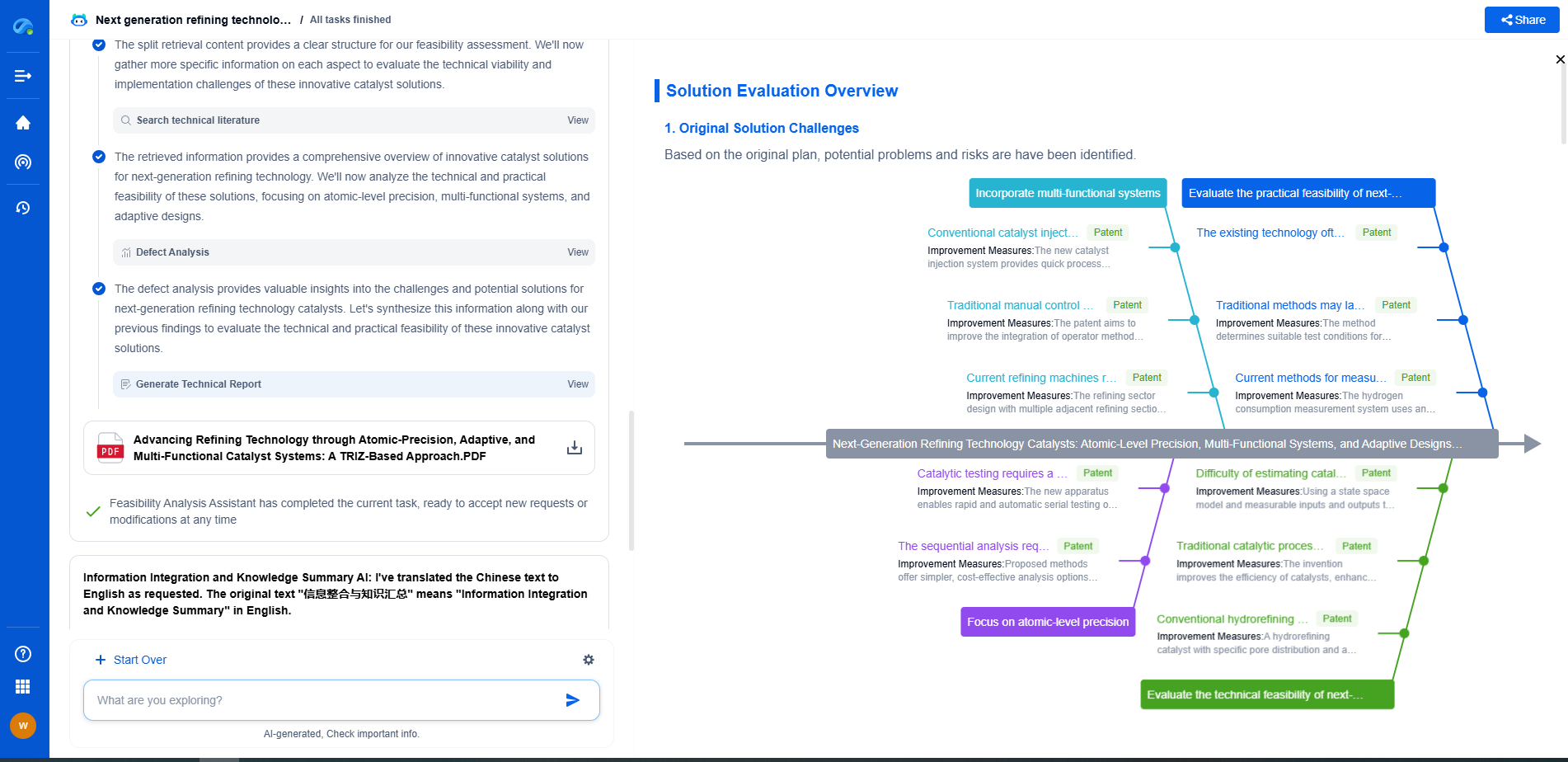What is a proximity sensor in a robot arm?
JUN 26, 2025 |
Proximity sensors have become a cornerstone in the field of robotics, particularly in the functionality of robotic arms. These sensors play a vital role in enhancing the efficiency and safety of robotic operations. But what exactly are proximity sensors, and why are they so important in robotic arms?
**What is a Proximity Sensor?**
A proximity sensor is a device capable of detecting the presence of nearby objects without any physical contact. They are used to determine the proximity of an object to the sensor itself, which can then trigger a specific response or action by the robot. In the context of a robotic arm, proximity sensors are crucial for tasks that require precision and careful handling of materials.
**Types of Proximity Sensors**
There are several types of proximity sensors used in robotic arms, each suited to different applications and environments:
1. **Inductive Sensors**: These are commonly used for detecting metallic objects. They operate by generating an electromagnetic field and detecting changes in this field caused by the presence of a metal object. Inductive sensors are robust and reliable, making them ideal for industrial applications.
2. **Capacitive Sensors**: Unlike inductive sensors, capacitive sensors can detect both metallic and non-metallic objects. They work by detecting changes in electrical capacitance caused by an approaching object. This versatility makes them useful in a wide range of applications, including packaging and material handling.
3. **Ultrasonic Sensors**: These sensors use sound waves to detect objects. By emitting ultrasonic waves and measuring the time taken for the waves to bounce back, the sensor can determine the distance to an object. Ultrasonic sensors are particularly useful in environments where optical sensors may fail, such as in the presence of dust or smoke.
4. **Infrared Sensors**: These sensors use infrared light to detect objects. They are commonly used in applications where lighting conditions are variable or where high-speed object detection is required. Infrared sensors are often found in automated sorting systems and robotic assembly lines.
**Applications of Proximity Sensors in Robotic Arms**
Proximity sensors in robotic arms are employed across numerous industries and for various tasks:
- **Precision Assembly**: In manufacturing, robotic arms equipped with proximity sensors are used for precise assembly tasks. The sensors help ensure that components are correctly positioned and aligned before assembly, reducing errors and increasing production efficiency.
- **Collision Avoidance**: Proximity sensors are essential for preventing collisions between robotic arms and other objects or people. By continuously monitoring their surroundings, the sensors enable the robotic arm to stop or change its course if an obstacle is detected, enhancing safety in automated environments.
- **Material Handling**: In warehouses and logistics, robotic arms use proximity sensors to accurately pick and place items. The sensors help determine the exact location of an item, allowing the robotic arm to handle it with care and precision.
**Benefits of Using Proximity Sensors**
The integration of proximity sensors in robotic arms offers numerous advantages:
- **Increased Accuracy**: Proximity sensors provide precise measurements, improving the accuracy of robotic operations. This is crucial in industries where even minor errors can lead to significant losses.
- **Enhanced Safety**: By enabling collision detection and avoidance, proximity sensors play a key role in making robotic systems safer for human workers and other equipment.
- **Versatility**: With various types of proximity sensors available, they can be tailored to suit specific applications and environments, making them a versatile solution for different industrial needs.
**Conclusion**
Proximity sensors are an indispensable component of modern robotic arms, providing the ability to detect and interact with the environment in a safe and efficient manner. As technology continues to advance, the role of these sensors in robotics will likely expand, leading to even more innovative applications and improved automation processes. Understanding how proximity sensors work and their benefits can help industries harness the full potential of robotic technology for improved productivity and safety.
Ready to Redefine Your Robotics R&D Workflow?
Whether you're designing next-generation robotic arms, optimizing manipulator kinematics, or mining patent data for innovation insights, Patsnap Eureka, our cutting-edge AI assistant, is built for R&D and IP professionals in high-tech industries, is built to accelerate every step of your journey.
No more getting buried in thousands of documents or wasting time on repetitive technical analysis. Our AI Agent helps R&D and IP teams in high-tech enterprises save hundreds of hours, reduce risk of oversight, and move from concept to prototype faster than ever before.
👉 Experience how AI can revolutionize your robotics innovation cycle. Explore Patsnap Eureka today and see the difference.
- R&D
- Intellectual Property
- Life Sciences
- Materials
- Tech Scout
- Unparalleled Data Quality
- Higher Quality Content
- 60% Fewer Hallucinations
Browse by: Latest US Patents, China's latest patents, Technical Efficacy Thesaurus, Application Domain, Technology Topic, Popular Technical Reports.
© 2025 PatSnap. All rights reserved.Legal|Privacy policy|Modern Slavery Act Transparency Statement|Sitemap|About US| Contact US: help@patsnap.com

